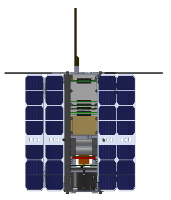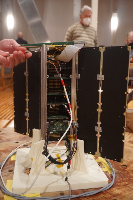| Satellite | CLIMB |
|---|---|
| Spacecraft type | CubeSat |
| Units or mass | 3U |
| Status | not launched, expected in 2025 |
| Launcher | not launched |
| Organization | University of Applied Sciences Wiener Neustadt |
| Institution | University |
| Entity | Academic / Education |
| Nation | Austria |
| Oneliner |
Use a propulsion system to reach the inner Van-Allen belt and measure the radiation environment. |
| Description |
This mission will go faster and higher than most of the CubeSat missions. It also will enter an area in space, which is normally avoided by satellites, the Van Allen Belts. CLIMB will utilize the propulsion technology developed by FOTEC and commercially marketed by its spin-off, ENPULSION. During its mission, CLIMB will continuously measure Earth’s magnetic field and the accumulated radiation. Mission Description:
|
| Notes | |
| Sources | [1] [2] [3] [4] [5] [6] [7] [8] |
| Photo sources | [1] [2] [3] |
| COTS subsystems |
|
| Subsystems sources | [1] |
| Keywords | Propulsion |
Last modified: 2024-05-21




